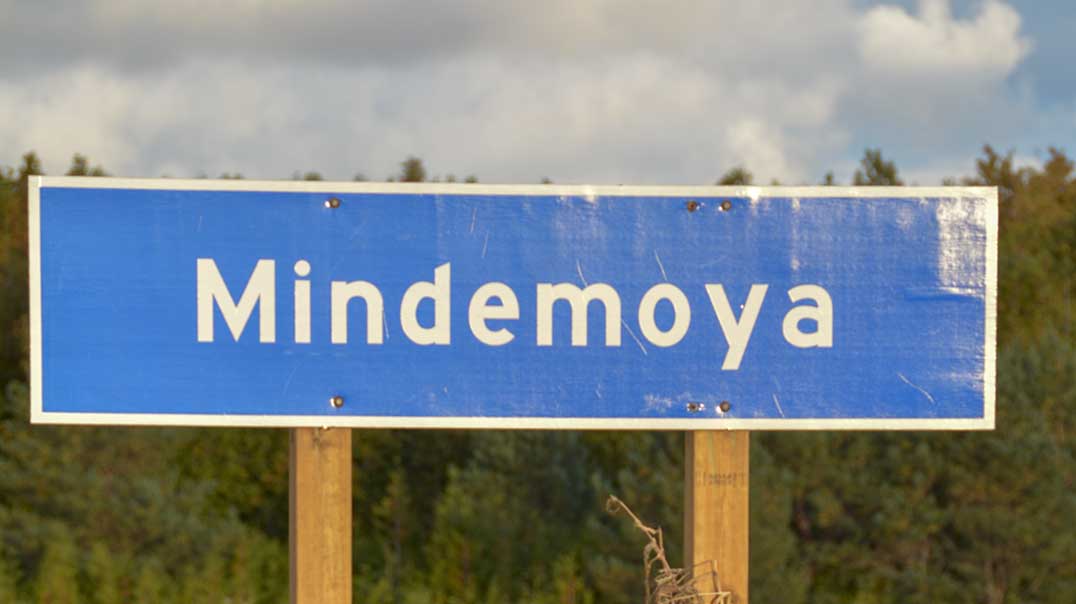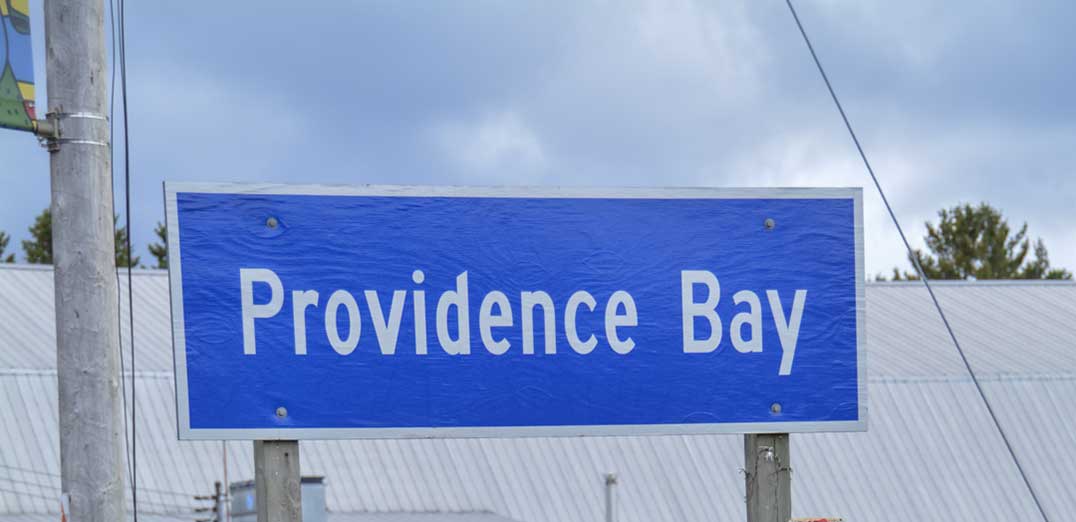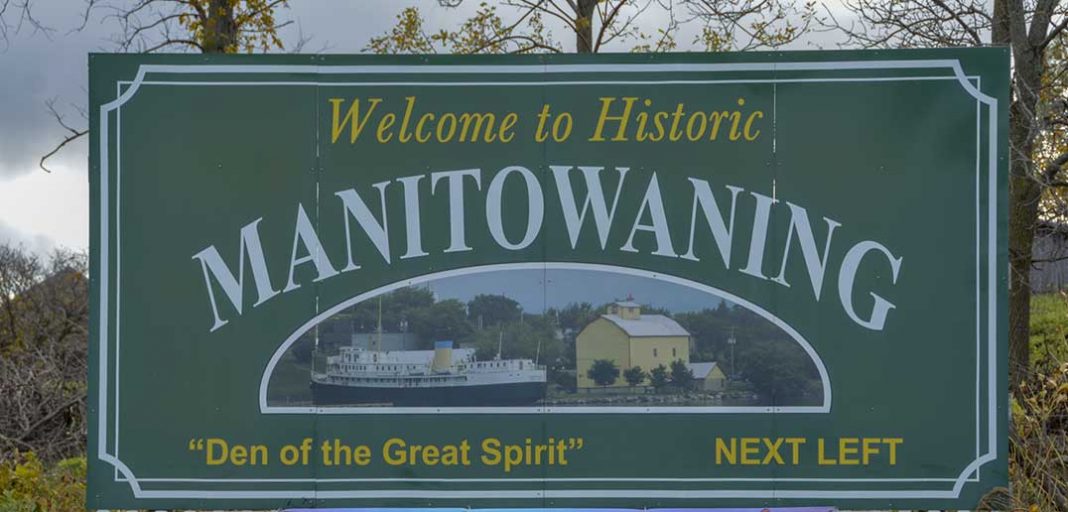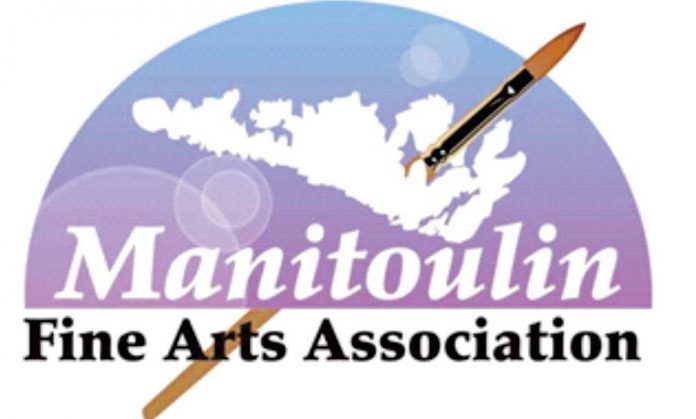by Isobel Harry
Manitoulin has always been considered a place of vision and dreams, a font of inspiration for stories, legends and art. Many of Manitoulin’s villages and hamlets still bear their original Indigenous designations as do the First Nations and the Unceded Territory of the Ojibwe, Odawa and Pottawatomi who have lived on the Island for centuries.
From earliest days, relates historian Shelley Pearen in ‘Exploring Manitoulin,’ there was an Indigenous legend about the creation of this island, “that the Great Spirit, known as Kitche Manitou, set aside the best pieces of the world when he created it, the bluest, most sparkling water; the whitest, most fleecy clouds, the brightest stars; the most fertile fields; the greenest forests [….] created from these special pieces an island and set it in an inland sea, Lake Huron, where it drifted to the North Shore’s rugged coast. [….] secured the island in place and proclaimed it ‘Manitou Minis’ or ‘Island of Manitou’.”
Manitowaning, the historic site where two seminal and still controversial treaties were signed between the Indigenous residents and the British Crown in 1836 and 1862, is translated from the Ojibwe to mean ‘Den of the Great Spirit.’ Many are the stories of an “underwater passage” within the narrow band of land between Manitowaning Bay and South Bay that allowed the Great Spirit to travel secretly between the two bodies of water. Other legends describe an underground passage stretching from Lake Huron to Lake Superior that facilitated the travels of the legendary “underwater monster,” Mishebeshu, depicted in art as a horned lynx, an immense ‘cat serpent’ that struck awe and fear in all who saw it.
Mindemoya, as we saw in the June 26 edition of the Summer Pages, means ‘Old Woman;’ named after the legend of Nanabush that tells of the trickster flipping his grandmother into the middle of Mindemoya Lake where she remains as the lake’s much-loved island.
From these legends arose the more utilitarian names of places, descriptive of the landscape and the wildlife to be found there in the seasons during which the Anishinaabek travelled to hunt, fish, plant crops and trade.

Little Current was Wewebijiwang – where the waters flow back and forth – for the North Channel’s narrowest point where the water slows or reverses. Known as ‘Dingwall’ for a time, and ‘Shaftesbury,’ the name given to the site by French Voyageurs, ‘Le Petit Courant,’ became, in English, the name by which the town is known today.
Sheguiandah, translated variously to mean ‘the home of the stork,’ ‘the place of the grindstone,’ ‘the bay of gray slate,’ or as being a twist on the French name of someone who lived there, a Mr Seguin—all are posited as original meanings of the name.
Ten thousand years ago, at the top of a quartzite hill in Sheguiandah, Indigenous people excavated a large quarry; filled with innumerable stone tools, spearheads and scrapers, the site was uncovered in 1951 by Thomas E. Lee, an archaeologist with the National Museum of Canada. In 1954, the hill, quartzite quarry, and the habitation area that encompasses the village of Sheguiandah were designated a National Historic Site of Canada.
The accepted view of the site among archaeologists today is the one first put forward by Patrick Julig of Laurentian University and Peter Storck of the Royal Ontario Museum on re-opening the site in 1991; they dated the quarry at 9,500 carbon-dated years, after the last Ice Age. Sheguiandah’s Centennial Museum has interactive displays of the archaeological site and memorabilia from the subsequent settler inhabitation.
Overlooking the waters of Manitowaning Bay, Wiikwemkoong means ‘Bay of the Beaver,’ or ‘at the gravel-bottom bay.’ The Unceded Territory has the longest history of continuous settlement on Manitoulin and a thriving traditional and contemporary culture.

From Providence Bay – Bebekodawangog, ‘where sand curves around the water’ – to Bridal Veil Falls in Kagawong – ‘where mists rise from falling water’ – the original names still evoke a strong sense of the natural outlay of the place. A fortunate exception for some, perhaps, is Sheshegwaning, or ‘place of the rattlesnakes’ – that name no longer applies. Nor does ‘barren hill’ – Pushkwadinong – fit Gore Bay whose hill, presumably the East Bluff, the highest promontory around, is today a lush, verdant forest of conifers.
M’Chigeeng First Nation reverted to its original appelation – Michigiwadinong, or ‘place of the fish harpoon’ – after being known as West Bay for a while. A trove of historical information can be found in the Ojibwe Cultural Foundation museum displays and cultural events, offering insight into the history, traditions, places and people that have shaped this region since time immemorial.
“Assiginack,” writes Cecil B. King in his scholarly work, ‘Balancing Two Worlds: Jean-Baptiste Assiginack and the Odawa Nation 1768-1866,’ “was a name I knew growing up on Wikwemikong… In my youth, his name was spoken in hushed tones. He was referred to as a traitor by some.” Dr King’s meticulous research uncovered “an honest, honourable man…” Known for his oratorical and interpretive skills, writes Cecil King, Assiginack “was a cultural mediator and a cultural broker,” and a warrior, living in traditional and modern worlds. A fitting namesake for the proud township in the southeast of the Island that bears it.
Tehkummah, the township next to Assiginack, is named after another complex historical figure, Chief Tekoma. Described by Shelley Pearen in ‘Four Voices: The Great Manitoulin Island Treaty of 1862,’ Tehkummah was one of only two chiefs in Wiikwemkoong who did not side with the band in refusing to cede the territory to the British in 1862; he and his dissenting ally were deposed as chiefs and temporarily expelled from the territory. However, the following year, Tehkummah was a signatory to a grand council petition to the governor general requesting the cancellation of the treaty and the restoration of ownership rights.
Manitoulin’s numerous museums, libraries, craft shops, art galleries and the Expositor Bookstore provide much to expand visitors’ awareness of the Island’s rich and ancient myths, legends and ways of life.





